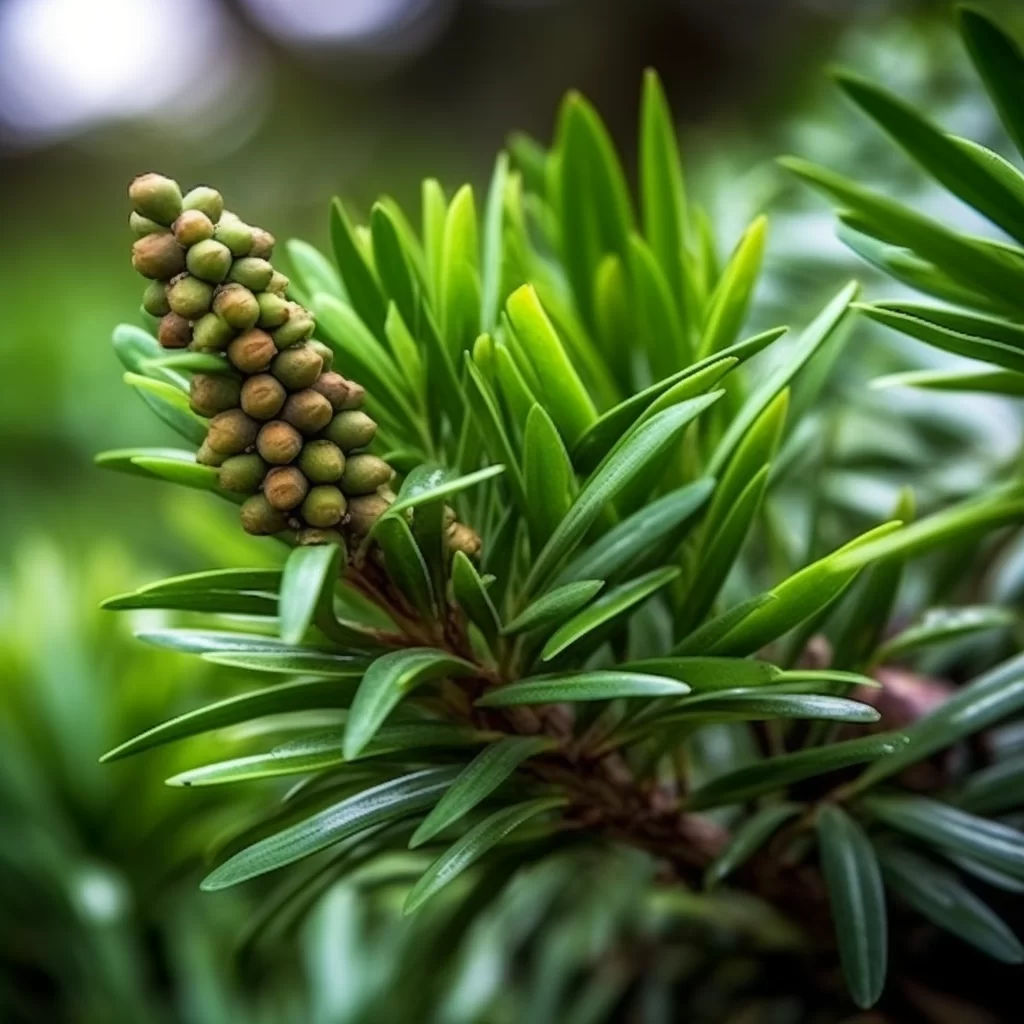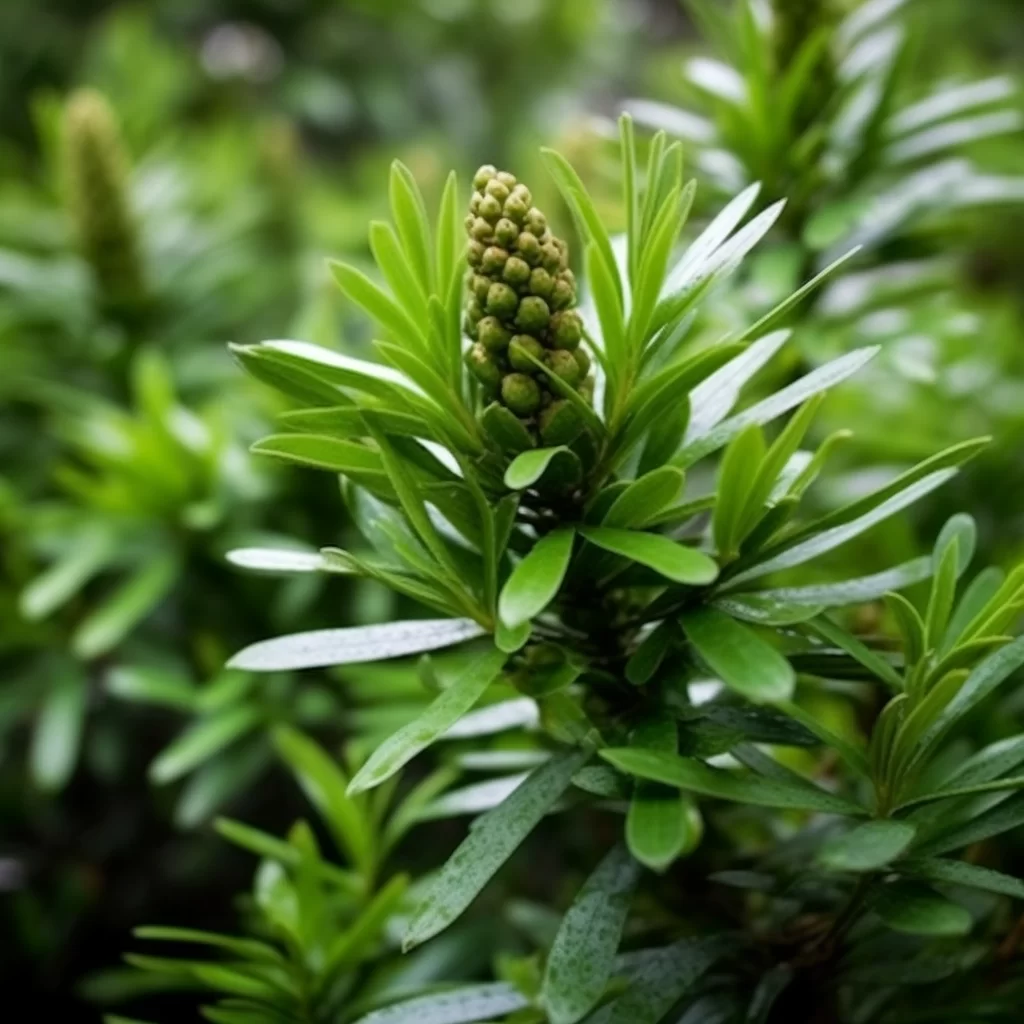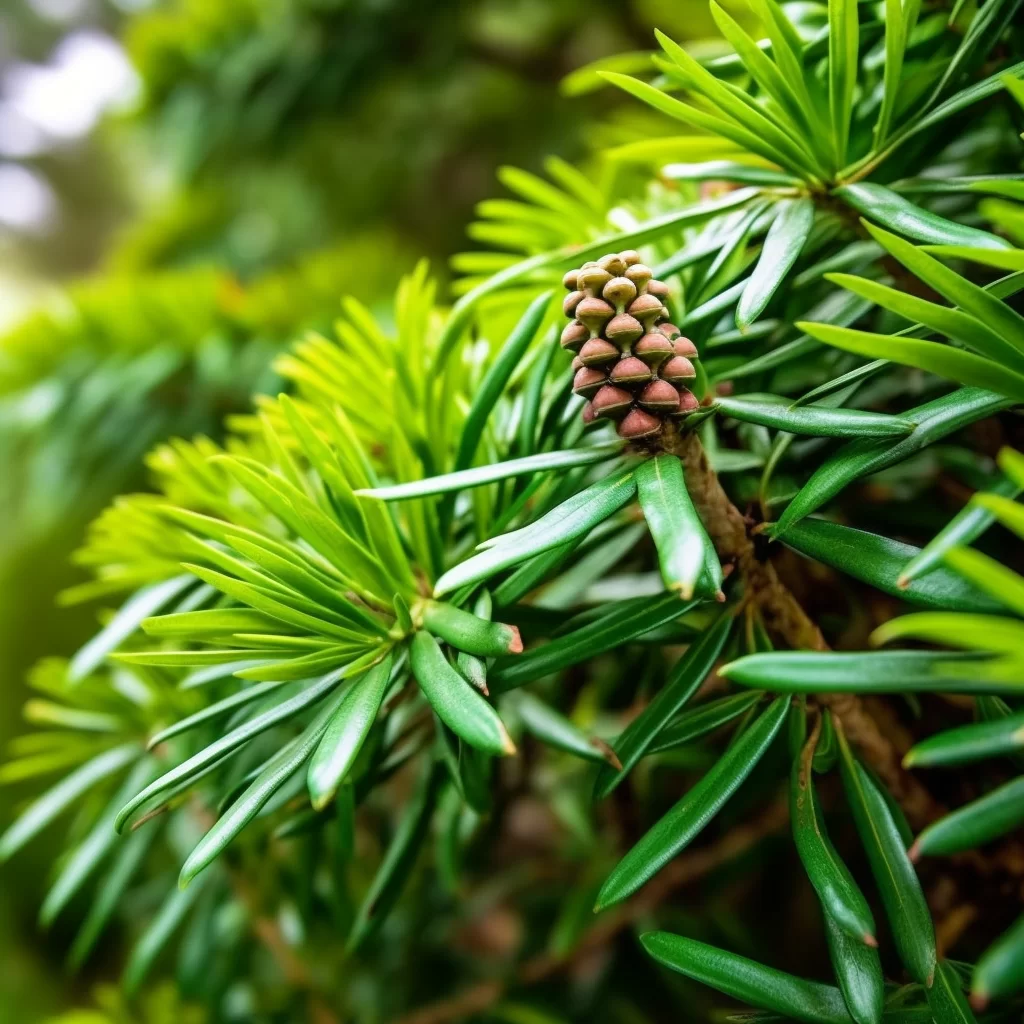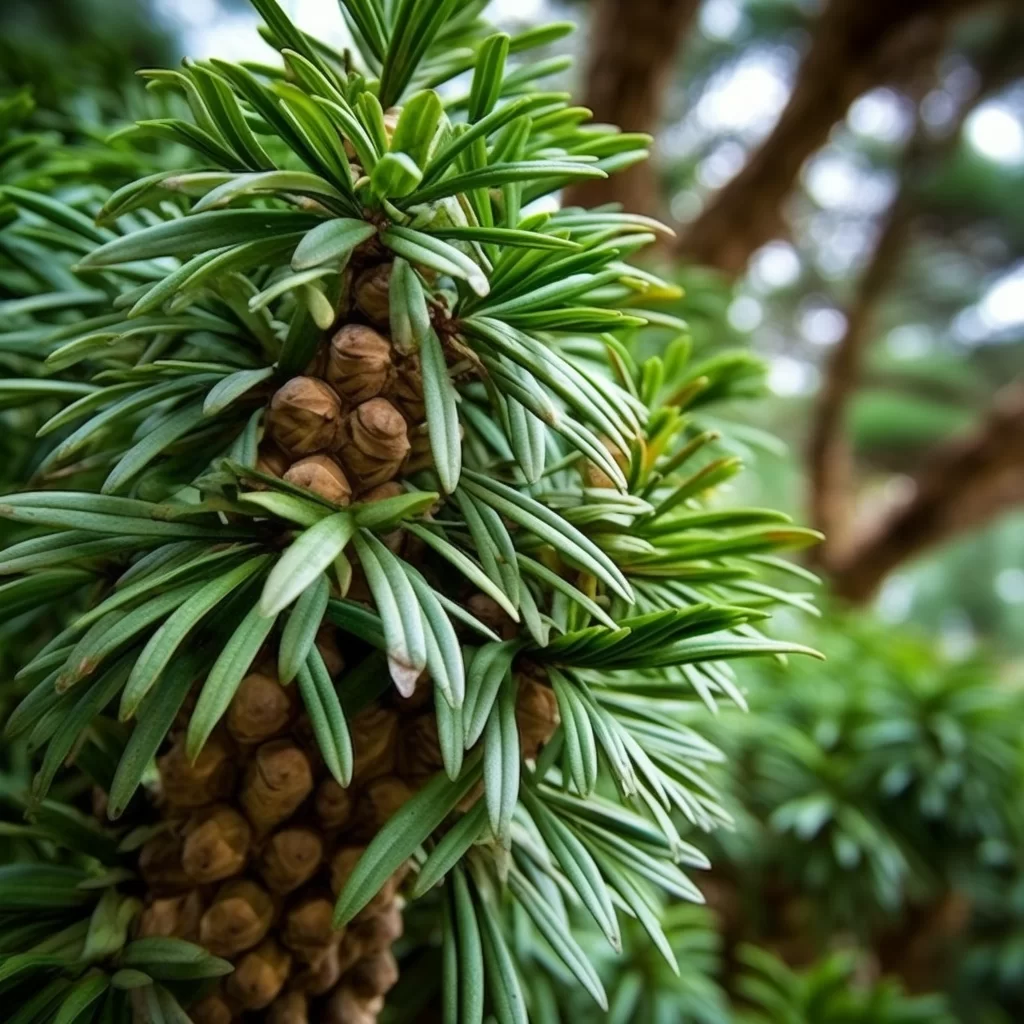Story of Day :
Contents
The Podocarpus Plant: A Complete Guide and Care Tips
The Podocarpus is a highly sought-after plant by gardeners worldwide due to its stunning beauty, versatility, and low-maintenance requirements.
This evergreen shrub has become increasingly popular in recent years for landscaping and gardening purposes because it adds an aesthetic touch to any garden or yard.
The plant’s long, narrow leaves create a soft texture that complements many different landscape styles while its adaptability makes it easy to care for.
If you’re planning on adding the Podocarpus to your garden but don’t know where to start, fear not! Our complete guide will provide you with all the information you need about this fantastic plant.With its unique features and impressive adaptability, it’s no surprise that the Podocarpus remains a top-choice among gardeners around the world.
Whether you are looking for an ornamental addition or simply want to add greenery to your outdoor space without too much effort, this evergreen shrub won’t disappoint! From understanding its growth habits and preferred soil conditions through identifying potential pests or diseases; our complete guide will provide everything from basic knowledge about how best to care for your new plants all the way up until they reach maturity.
So what are you waiting for? Don’t hesitate – add some Podocarpus magic into your outdoor space today!
What is a Podocarpus?
Podocarpus is a fascinating genus of conifers, which comprises approximately 100 different species.
These trees and shrubs can be found in various regions across the globe, ranging from Asia to South America.
They are known for their unique appearance and impressive adaptability to different environments.
Some Podocarpus species grow as tall trees, while others take on a more compact shrub-like form.
They also come in different shades of green, from pale yellowish-green to dark emerald hues. This diversity adds to the appeal of Podocarpus as an ornamental plant choice for gardeners or landscapers.
This diversity adds to the appeal of Podocarpus as an ornamental plant choice for gardeners or landscapers.
In addition, many species have practical uses too; they provide timber for construction or furniture-making and offer medicinal benefits such as reducing inflammation or aiding digestion.
With this wide range of characteristics and applications, it is no surprise that Podocarpus has become a popular choice among nature enthusiasts worldwide.In summary, Podocarpus is a versatile genus with an intriguing mix of ornamental beauty and practical utility.
Its presence can be felt all across the world’s continents – wherever you go; you might just encounter one variety or another!
One of the most commonly cultivated plants is the Japanese Yew, scientifically named Podocarpus macrophyllus.
This plant has gained immense popularity in gardens throughout Asia over a long period of time, and only recently has it become popular in Europe and North America.
The evergreen nature and unique appearance make it stand out among other garden plants.The Japanese Yew is an attractive addition to any garden with its elongated leaves tapering to a point.
Its shape is dense and elegant, making it perfect for use as a hedge or screen planting.
The plant can also be grown as an ornamental tree with proper pruning techniques applied periodically for maintaining its shape.
It is no wonder that this beautiful species has gradually found its way into the hearts of gardening enthusiasts worldwide!

Why Choose a Podocarpus?
- Their foliage: One of the primary reasons gardeners choose podocarpuses is their striking foliage.
The leaves are typically dark green or blue-green with a glossy finish that looks great year-round.
- Versatility: They can be used as hedges for privacy screens or incorporated into mixed borders for added texture and color variation.
- Drought tolerant: Once established, podocarps require little watering beyond normal rainfall amounts which makes them ideal plants for xeriscaping or areas with high temperatures where water conservation may be a concern.
Care Tips
Location
A key factor in successfully growing podocarps is finding the right location.
Ideally, they should be planted in a spot with dappled shade and protection from the hot afternoon sun.
If planted in full sun, leaves burn and wilt very easily.

Soil
Podocarpus will thrive in well-draining soil that is slightly acidic (pH 5.5 to 6.5).
If your soil is too heavy or claylike, amend it with compost or other organic matter before planting.
Watering
Newly planted Podocarpus will require frequent watering until they become established.
After that, mature plants can survive on rainfall alone but may need supplemental irrigation during periods of drought or hot weather.
Fertilization
To encourage lush growth and maintain vibrant foliage color, fertilize podocarps once per year using a balanced slow-release fertilizer applied according to package instructions.
Dealing with pests and diseases is an essential aspect of maintaining a healthy and thriving environment for plants and animals.
Pests, such as insects or rodents, can cause significant damage to crops or gardens if left unchecked.
Effective pest control methods include the use of natural predators or non-toxic repellents to avoid harming beneficial insects like bees that aid in pollination. Similarly, diseases can also pose a threat to plant health.
Similarly, diseases can also pose a threat to plant health.
Some common plant diseases like blight or powdery mildew can spread rapidly if not treated promptly.
Prevention methods include regular inspection for signs of disease, proper watering techniques, and good air circulation around plants.
In some cases, chemical treatments may be necessary but should be used judiciously to avoid negative impacts on the environment.
By taking proactive steps to manage pests and diseases, we can help ensure the continued vitality of our natural ecosystems.
Podocarps are often plagued by spider mites, which can be quite a nuisance.
However, there is an easy solution to this problem – regularly spraying the plant with water will help control these pests.
If you do this every few days until no signs of damage appear, your podocarp should stay healthy and vibrant.
Other fungi can also attack these plants and cause leaf spots that turn brown over time.
Diplodia Tip Blight is one such fungus that affects new growth primarily; it starts as brown tips before gradually killing entire branches if left untreated for long periods of time.
Luckily, surgical removal or chemical treatment can prevent further damage if caught early on.In summary, keeping your podocarp free from pests is crucial for its well-being.
Spider mites are a common issue but can be easily controlled through regular washing with water spray while other fungi may cause leaf spots and tip blight in new growths that eventually result in small holes appearing on leaves which become brownish over time until they die back entirely leaving the plant vulnerable to more attacks by other opportunistic microorganisms; therefore timely attention when noticed cannot be overstressed during maintenance routines involving these plants.
With proper care and attention, you can ensure a healthy and thriving podocarp for years to come!
In conclusion, bringing home a podocarpus plant can be a great addition to your living space.
These plants are relatively low-maintenance and can thrive in a variety of environments, making them perfect for those who are new to gardening or live in apartments.
Additionally, the podocarpus has many health benefits as it is known to purify the air while also reducing stress and anxiety levels.Furthermore, the podocarpus plant has an interesting history and cultural significance as it has been used for medicinal purposes by Indigenous peoples in New Zealand.
It is also commonly found in Chinese medicine due to its anti-inflammatory properties.
With its beautiful evergreen foliage and unique appearance, the podocarpus is not only a beneficial addition to your home but also serves as a symbol of cultural heritage and natural healing practices.
The Podocarpus is a great option for anyone looking to add some beauty and greenery to their garden without having to put in too much effort.
This ornamental plant is not only attractive but also incredibly low-maintenance, making it an ideal choice for people who don’t have a lot of time or energy to devote to gardening.
With its evergreen foliage, the Podocarpus adds a touch of color and vibrancy to any outdoor space all year round.One of the best things about the Podocarpus is that it’s incredibly adaptable and can thrive in various conditions.
Its drought-tolerant nature makes it perfect for xeriscaping, which means that you won’t have to worry about watering it too frequently or wasting precious resources on keeping your plants alive.
Additionally, with our comprehensive care guide, you’ll be able to ensure that your Podocarps remain healthy and beautiful year after year!